
Dive deep into Kyushu’s rich culture of onsen bathing and porcelain
Kyushu’s wild, raw landscapes and stunning natural formations are intimately tied to some of its most prized cultural features. Geothermal activity from its numerous volcanoes have given rise to mineral-rich waters that make Kyushu one of Japan’s top destination for onsen bathing, while deposits of kaolin clay resulted in Japan’s first porcelain wares—and some of the country’s foremost locales for yakimono (pottery).
Day 1
Begin your journey in Tokyo, where you’ll explore a gorgeous art form known as kiriko (geometrical cut glass) at the Sumida Edo Kiriko-kan in the city’s historic Sumida Ward. Traditional designs handed down from the Edo era include chrysanthemum flowers and hemp leaves; try your hand at engraving your own pattern in one of the onsite workshops.


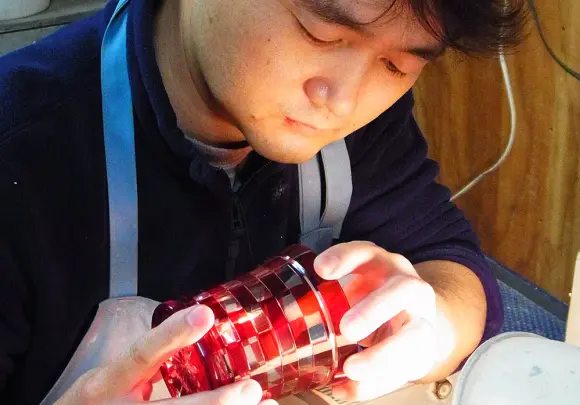
Next, catch your flight to Fukuoka and make your way by train to the first stop in your Kyushu porcelain exploration: the tranquil seaside town of Karatsu in Saga prefecture, along the windswept Japan Sea coast. Be sure to arrive early enough to take in the stylish atmosphere at Yoyokaku, your ryokan for the night, where you’ll be surrounded by warm-toned woods including black pine, cherry, chestnut, and Burmese teak. Enjoy your sumptuous dinner of seafood and other local fare, and end the evening with a soak in your own private wooden tub.


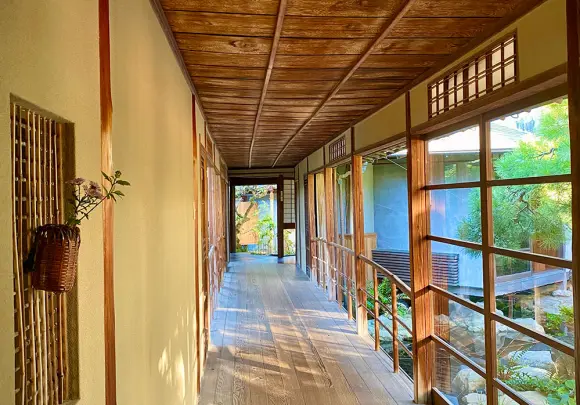


Day 2
Chat after breakfast with your hosts, the Okochis, a warm family who are eager to greet guests and recount the inn’s long and fascinating history of welcoming overseas visitors. Browse Yoyokaku’s onsite collection of Karatsu-style porcelain wares crafted by local potter Takashi Nakazato and his children. His daughter Hanako, who divides her time between nearby Mirukashi and Maine in the U.S., has developed a unique style rooted in Karatsu techniques that features her own creative twist.



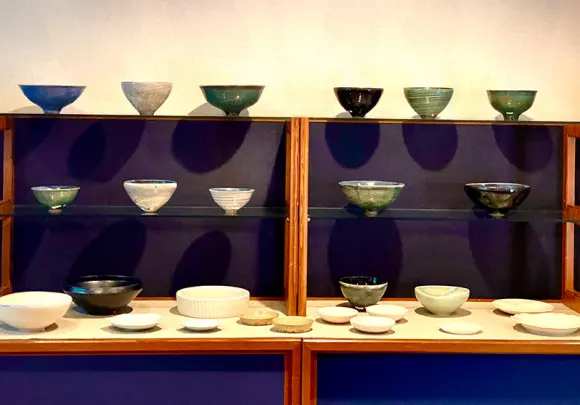
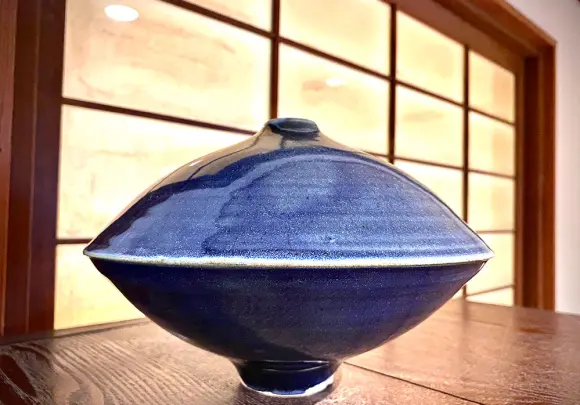
On your way out of Karatsu, stop by Kaikaido, a family-run shop specializing in matcha green tea, traditional Japanese confectionery, and Karatsu-style ceramics since 1898. Select your choice of sweets from among an array of tastes designed to match the season. During our visit, the flavors on offer included chrysanthemum, along with both savory and sweet chestnut.


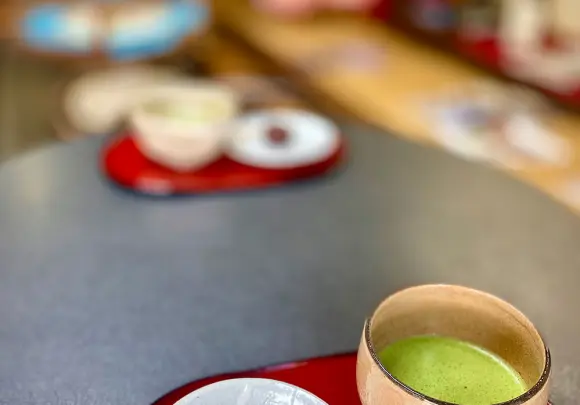
Historically, Imari was the name given to all porcelain from the region that was exported to Europe via Imari port--including those which had been crafted in Arita. An excellent place to explore Imari pottery is the mountainous village of Okawachiyama, where secret kilns were hidden in order to produce copious amounts of Imari ware for the ruling Nabeshima clan, including some made using local magnetite. Today, this is a lovely locale to browse ceramics kilns and shops located inside kominka (traditional Japanese homes).
Photo by Koichi and gutyan

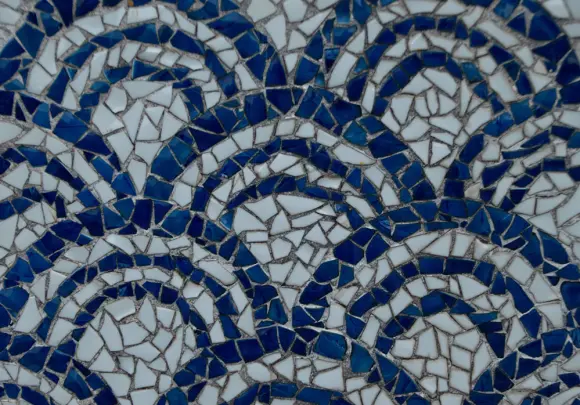
Your accommodation for the night will be in Ureshino onsen, famed for its alkaline waters whose elements include sodium bicarbonate, which is said to be fabulously soothing for the skin. The area is also famous for green tea, as well as imaginative baths that have ingeniously brought these two resources together by allowing you to soak in green tea-infused waters. A good onsen soak is said to induce deep sleep, and after this experience, you will certainly sleep like a baby.

Day 3
Deepen your understanding of porcelain wares in the Saga region, beginning with Arita ware, which often featured showy designs that were beloved by European nobility. Sign up for a private tour of the iconic Arita-yaki Kakiemon Kiln, whose present master is a 15th-generation potter. Also, stop by the Kouraku Kiln, which lets you pay a fixed fee and then take home as much pottery as you can carry in your basket.
Photo by IORI

Hasami, a region overlapping both Saga and Nagasaki prefectures, can be pronounced with the English meaning of “scissors”—and this is precisely the visual that greets visitors to the flagship store of Maruhiro ceramics manufacturer to denote one of its signature brands. Browse the shop’s eclectic selection of goods. Head afterward to Nishinohara, a collection of Showa era-style cafés, art studios and shops straddling the border of Saga and Nagasaki prefectures, where you can relax on a leafy patio with a coffee, or enjoy some local sweet treats such as an array of homemade ice creams.
Note: Maruhiro, Inc. has moved to a new facility called HIROPPA located in the same town.





Spend your evening stretching the boundaries of your imagination beyond what you thought possible with a visit to teamLab’s latest digital extravaganza. Located on the premises of the Mifuneyama Rakuen hotel atop Mount Mifune, here you’ll walk through seemingly thousands upon thousands of lanterns that change colors right before your eyes. The mountain was also recently the site of a full-blown installation, “teamLab: Where the Gods Live”. If you book ahead, you may even be able to score yourself a stay at the hotel—if so, consider yourself lucky.

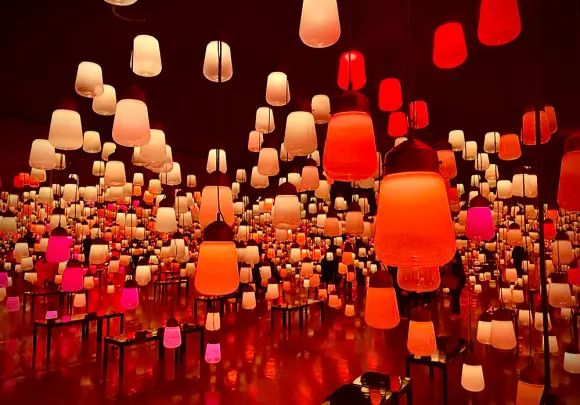

Day 4
Start your morning with a walk around Mifuneyama Rakuen, which is lovely for enjoying seasonal flowers. Head next to Kashima, sitting near the mouth of the Ariake Sea, which boasts the impressive red torii gates of the Yutoku Inari shrine dedicated to Inari, the deity of foxes.

Make your way from Saga to Hita, Oita prefecture to the lovely forested hot springs town of Amagase Onsen, which joins Beppu and Yufuin to form the trifecta of top onsen bathing destinations in the Bungo region. Many of the baths offer mixed bathing (i.e., not segregated by gender), and you’ll also find tattoo-friendly onsen and those with private baths. Consider staying in a ryokan with atmospheric river and waterfall views.
Photo by Mika Senda





Day 5
If you find yourself returning from Oita airport, your route will take you through the iconic onsen town of Yufuin. Stop here for a dip in one of the local hot springs that allows day-trippers, such as Tsukanoma. If you have enough time before your flight, visit the stylish Sansou Murata complex for one last coffee while you take in the beautiful views of the town to fortify yourself until your next visit.
Photo by KUZUHA


Kimberly Hughes
Kimberly Hughes is a freelance writer, translator, and community organizer who is originally from the desert of the southwestern U.S. and has been based in Tokyo since 2001. She is somewhat addicted to global travel, and also loves cooking, gardening and reading.

Photos by Solveig Boergen
Solveig Boergen is a Tokyo-based photographer originally from Germany who has spent more than three decades living in Asia(Japan, China, Hong Kong, Taiwan, Thailand and Nepal). Her work aims to share human stories, and to show realities that might otherwise remain unseen.Besides travel photography, she specializes in portraits that convey deep emotion, such as newborn babies with their families.
Book your perfect stay in Kyushu with thousands of properties to choose from
 Kyushu by Rail
Kyushu by Rail Exploring the boundless world of Japan's meccas of spirituality
Exploring the boundless world of Japan's meccas of spirituality Historic Sites and Seaside Adventures
Historic Sites and Seaside Adventures Kyushu's Scenic Coast
Kyushu's Scenic Coast Natural Wonders and Hot Springs
Natural Wonders and Hot Springs A Taste of Kyushu
A Taste of Kyushu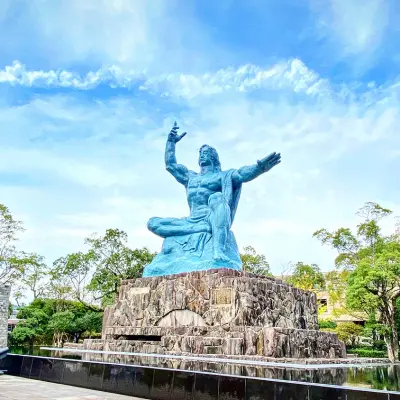 Exploring peace in Kyushu and environs: A most worthwhile journey
Exploring peace in Kyushu and environs: A most worthwhile journey Dive deep into Kyushu’s rich culture of onsen bathing and porcelain
Dive deep into Kyushu’s rich culture of onsen bathing and porcelain






